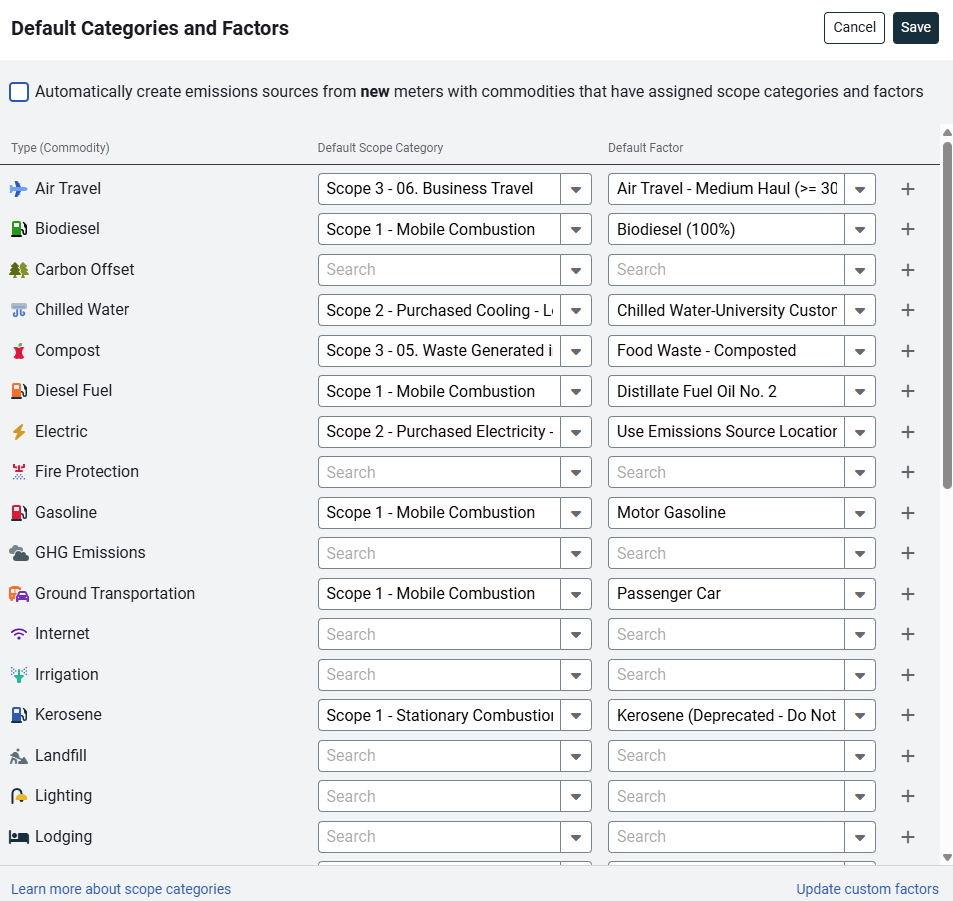Default categories and factors
Manage and report on Scope 1, Scope 2, and Scope 3 emissions based on their standard categories using default or customized factors.
Set default scope categories
You configure default categories and factors in the Settings (Gear) menu. In the Emissions section, select Default Categories and Factors.

Choose a scope and category
GHG Protocol standards identify operational boundaries for corporations and institutions to scope their sources of emissions to provide accountability and for the prevention of double counting or conversely, double credits.
They categorize emissions as three distinct scopes that form the backbone of the GHG inventory and reporting format.
- Scope 1 Emissions: Includes all direct sources of GHG emissions from sources owned or controlled by the corporation or institution.
- Scope 2 Emissions: Accounts for indirect sources of GHG emissions from the generation of purchased utilities consumed by the corporation or institution. A purchased utility is defined as one that is bought or otherwise brought into the organizational boundary of the company. Scope 2 emissions physically occur at the facility where the utility is generated and thus are separated from direct emissions reported by the utility company to avoid double counting.
- Scope 3 Emissions: Indicates all other indirect emissions. Scope 3 emissions are a consequence of the activities of the company or institution but occur from sources not owned or controlled by the company